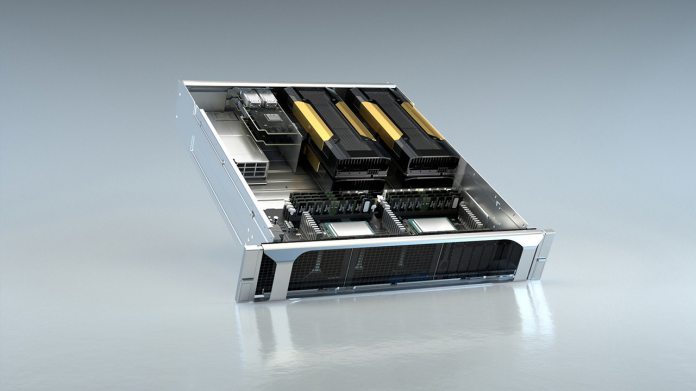Azure IoT platform will provide cloud computing for edge devices and IoT and Red Hat a Kubernetes plugin. Ericsson will provide the 5G network support, with it all running on Nvidia’s EGX platform. “The age of intelligent edge computing has arrived. The world’s largest industries want to have AI computing at the edge, to extract insight from continuous streams of data, and to sense, reason, and act at the point of action,” said Nvidia CEO Jensen Huang to VentureBeat. “In time, this will be the largest-scale computing ever created, connecting trillions of smart sensors. Nvidia’s and Microsoft’s platforms dovetail to offer customers an end-to-end solution from edge to cloud.” Essentially, Nvidia is providing a 5G infrastructure that can also be used to provide AI services. That can power experiences in many forms, with the company suggesting smart cities and factories, as well as AR, VR, and cloud gaming. The last point is an interesting one. Both Nvidia and Microsoft have a streaming service, the former GeForce Now and the latter Project xCloud. Though the two products seem somewhat at odds, they may not necessarily work out as direct competitors. GeForce Now is focused on letting PC gamers run their already purchased titles, while Microsoft may provide a ‘Netflix for Games’ type subscription. Either way, it’s the technical details of the GPU-accelerated 5G processing that’s key here. Nvidia says its two major SDKs can provide the following:
NVIDIA cuVNF SDK: provides optimized input/output and packet processing, sending 5G packets directly to GPU memory from GPUDirect-capable network interface cards. NVIDIA cuBB SDK: provides a GPU-accelerated 5G signal processing pipeline, including cuPHY for L1 5G Phy, delivering unprecedented throughput and efficiency by keeping all physical layer processing within the GPU’s high-performance memory.
The benefit of all this is a network that can be reconfigured quickly, taking advantage of 5G’s network slicing tech to let operators dynamically offer services to customers. Nvidia claims its solution gives telcos a high return on investment in that regard, letting them adjust traffic on the fly for savings. Aerial is currently available to early adopters and will be in general availability by the end of the year.




